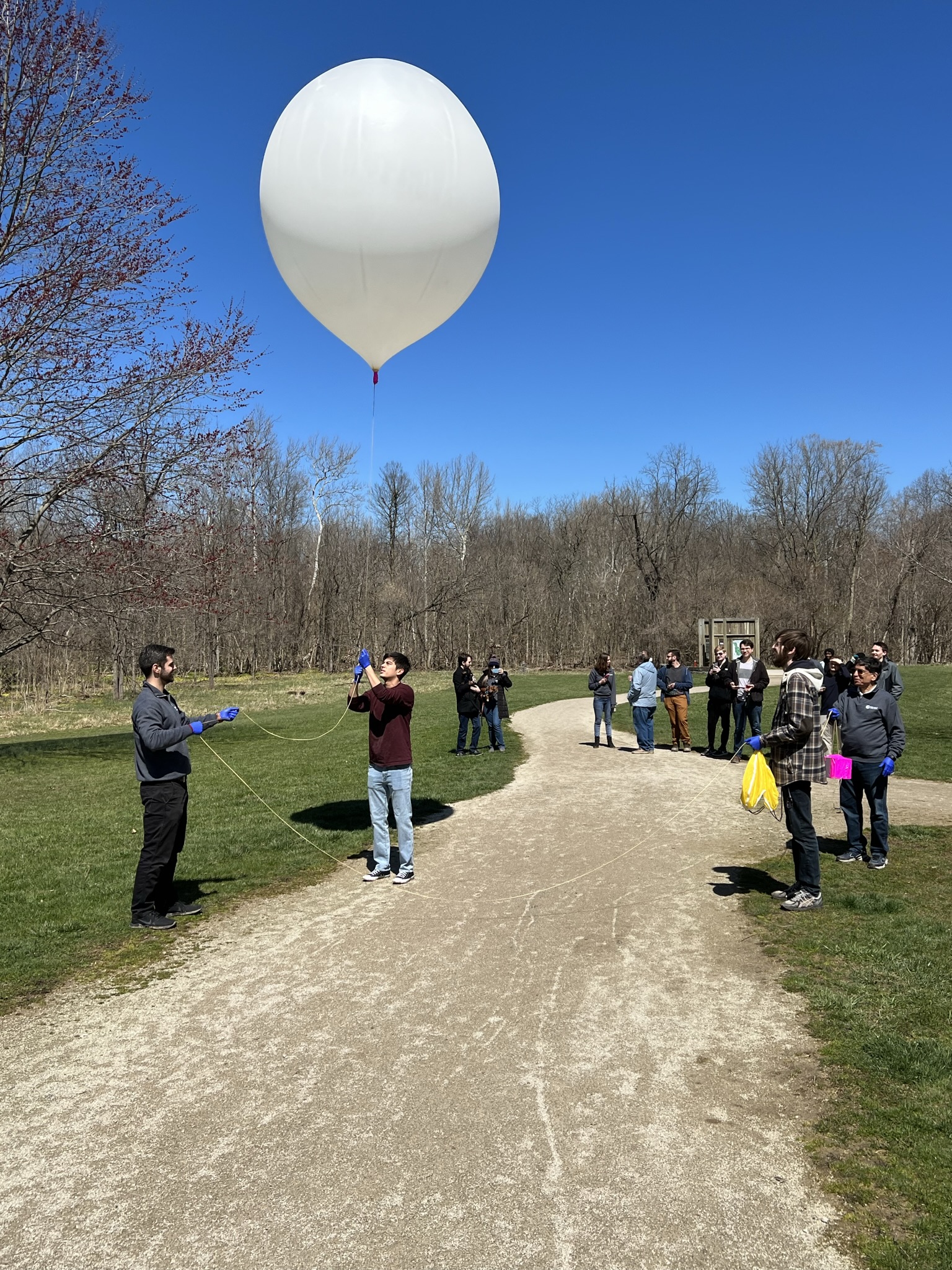Comsat Architects was a proud sponsor and team member of Case Western Reserve engineering students’ BalloonSat project which paved the way for future satellite hardware.
A High-Altitude Balloon (HAB) test is a cost-efficient way of testing communication satellite hardware prior to designing and launching a low Earth orbit satellite.
The launch took place at Mill Hollow Bacon Woods Park in Vermilion, Ohio at 12 p.m. on Sunday, April 10.
The goal of the project was to test a communication payload which transmits data from the air back down to the ground. An aluminum frame housed the payload, radios, and hardware which was attached to a large helium filled balloon.
Comsat Architects has provided guidance and resources for the project to the students. With the information from this project, Comsat Architects and Case Western Reserve University will be able to rapidly develop HABs in the future.
“We pride ourselves in sparking interest for university students on the fast-developing world of space technology for NASA, commercial, and defense purposes,” said Dr. Kul Bhasin, CEO and founder of Comsat Architects.
The communication payload landed via parachute near Canton and the flight was deemed successful. All materials were retrieved by the Case Western Reserve University Students and Comsat Architects.
Quick Facts:
- The structure, electronics, communication software, and logistics were completed by Case Western Reserve aerospace and electrical engineering students for their senior projects.
- The Balloon ascended to 82,000 feet, where it burst and a parachute deployed.
- The entire flight time was 1 hour and 52 minutes and 72 miles.
- An onboard sensor collected atmospheric data such as temperature, pressure, and humidity and transmitted to the ground over Amateur Radio frequency bands.




